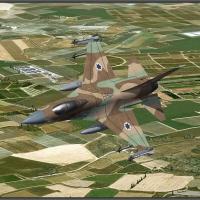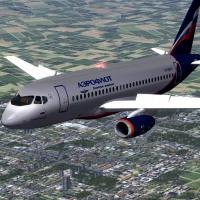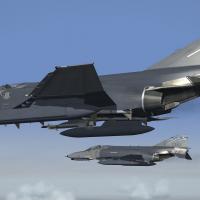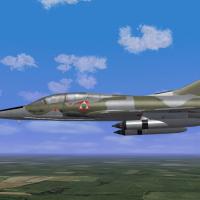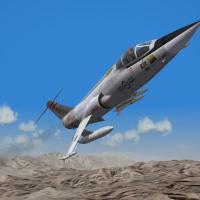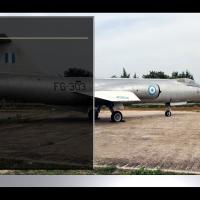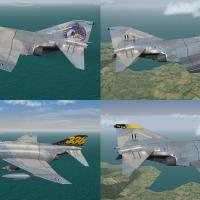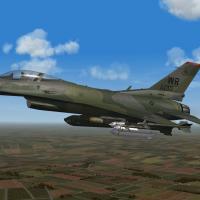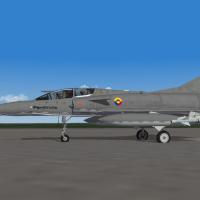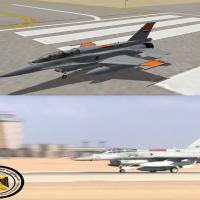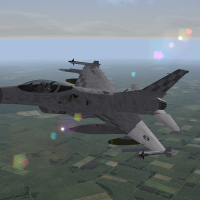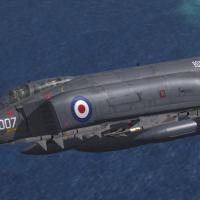-
Content count
384 -
Joined
-
Last visited
Content Type
Profiles
Forums
Calendar
Gallery
Downloads
Store
Everything posted by wazalo68
-
-
Good
-
Good work! don't forget arab vipers: Egyptian Air Force ( Al Quwwat al Jawwiya Ilmisriya) operates 220 F-16s, F-16A/B BLK15, F-16C/D BLK32/40/52. Bahrain Amiri Air Force (BAAF) operates 22 F-16s, F-16C/D BLK40 Royal Jordanian Air Force ( Al Quwwat al Jawwiya al Malakiya al Urduniya) operates 64 F-16A/B Blk15 ADF's & F-16AM/BM MLU's Royal Air Force of Oman (Al Quwwat al Jawwiya al Sultanat Oman ) ordered 12 F-16C/D Blk50 aircraft Royal Moroccan Air Force (Al Quwwat al Jawwiya al Malakiya) operates 24 F-16s, F-16C/D Blk52 Iraqi Air Force (Al Quwwat al Jawwiya al Iraqiya ) is the latest customer, A total of 18 F-16C/D Blk52 airframes was ordered in 2011
-
-
-
-
-
-
CF-104? Main article: Canadair CF-104 200 Canadian-built versions, built under license by Canadair and optimized for both nuclear strike and 2-stage-to-orbit payload delivery, having NASARR R-24A radar with air-to-air modes, cannon deleted (restored after 1972), additional internal fuel cell, and Canadian J79-OEL-7 engines with 10,000 lbf (44 kN)/15,800 lbf (70 kN) thrust. CF-104D? 38 dual-control trainer versions of CF-104, built by Lockheed, but with Canadian J79-OEL-7 engines. Some later transferred to Denmark, Norway, and Turkey.
-
F-104J? Specialized interceptor version of the F-104G for the Japanese ASDF, built under license by Mitsubishi for the air-superiority fighter role, armed with cannon and four Sidewinders; no strike capability. Some were converted to UF-104J radio-controlled target drones and destroyed. Total of 210 built, three built by Lockheed, 29 built by Mitsubushi from Lockheed built components and 178 built by Mitsubishi. After retired in Japan, U.S. delivered some 104J/DJs to the airforce of Taiwan. F-104DJ? Dual-control trainer version of F-104J for Japanese Air Self-Defense Force, 20 built by Lockheed and assembled by Mitsubishi. After retired in Japan, U.S. delivered some 104J/DJs to the airforce of Taiwan.
-
-
-
- 11 comments
-
- armée de lair
- dassault
-
(and 6 more)
Tagged with:
-
Mirage F-1E Iraq/Iran Pack................ The delivery of Mirages began in the February 1981 after a delay of several months as a result of the outbreak of the Iran-Iraq war in September 1980 and after overcoming all the obstacles of political and logistical France started delivery of the aircraft were taking off from France across the Mediterranean and then landing in Cyprus to refuel and fly towards Jordan and then to enter the territory of Iraq where Saddam Air Base in Qayyarah / Shirqat a new air base for the accommodation Iraqi Mirage aircrafts. The first squadron was form of the aircrafts Mirage the squadron No. 79. The numbers of Iraqi Mirage F1, which in turn contracted by Iraq and by years of contracting and delivery as follows: - - Mirage single-seat fighter F1EQ 1980-1981 (16 Mirage F1EQ) carried the numbers (4004-4019) 1981-1982 (16 Mirage F1EQ-2) carried the numbers (4020-4035) 1982-1984 (28 Mirage (F1EQ-4) carried the numbers (4500-4503 and 4506-4529) 1983-1985 (20 Mirage F1EQ-5) carried the numbers (4560-4579) 1988 - 1990 (18 Mirage F1EQ-6) carried the numbers (4600-4608 and 4615-4623) 12 aircraft Mirage F1EQ-7 has not been supplied to Iraq after the UN's embargo after the occupation of Kuwait in 1990. - Mirage dual-seat fighter F1BQ 1980-1981 (2 Mirage F1BQ) carried the numbers (4000-4001) 1981-1982 (2 Mirage F1BQ) carried the numbers (4002-4003) 1982 - 1984 (5 Mirage F1BQ) carried the numbers (4504-4505 and 4556-4558) 1988-1989 (6 Mirage F1BQ) carried the numbers (4609-4614) F1BQ 3 aircraft had not been delivered to Iraq as a result of the UN's embargo after 1990. Total: - 98 aircrafts a single seat fighter. 15 aircrafts double seat fighter. And it is so total 113 Mirage Iraq had been contracted and were delivered, which sent 24 aircrafts of them to its neighbor Iran in 1991. And out of 15 aircrfts were didn't delivred to Iraq.
- 11 comments
-
- armée de lair
- dassault
-
(and 6 more)
Tagged with:
-
Mirage F-1 Iraq Pack: Mirage F1EQ : Export version of the Mirage F1E for Iraq. 16 built. Mirage F1EQ-2 : Single-seat air defence fighter version for Iraq. 16 built. Mirage F1EQ-4 : Single-seat multi-role fighter, ground-attack, reconnaissance version for Iraq. 28 built. Mirage F1EQ-5 : Single-seat anti-shipping version for Iraq. 20 built. Mirage F1EQ-6 : Single-seat anti-shipping version for Iraq. 30 built.
-
-
Croatia - Hrvatsko Ratno Zrakoplovstvo Rumor has it that Croatia is looking to replace its MiG-21bis force with a modern fighter, preferably the F-16. In the late nineties a couple of Aviano based USAF F-16C's performed a series of demonstration flights in Croatia to back a possible sale of F-16s to that country. Since, no further news has been released about the subject. http://www.f-16.net/f-16_users_article27.html
-


